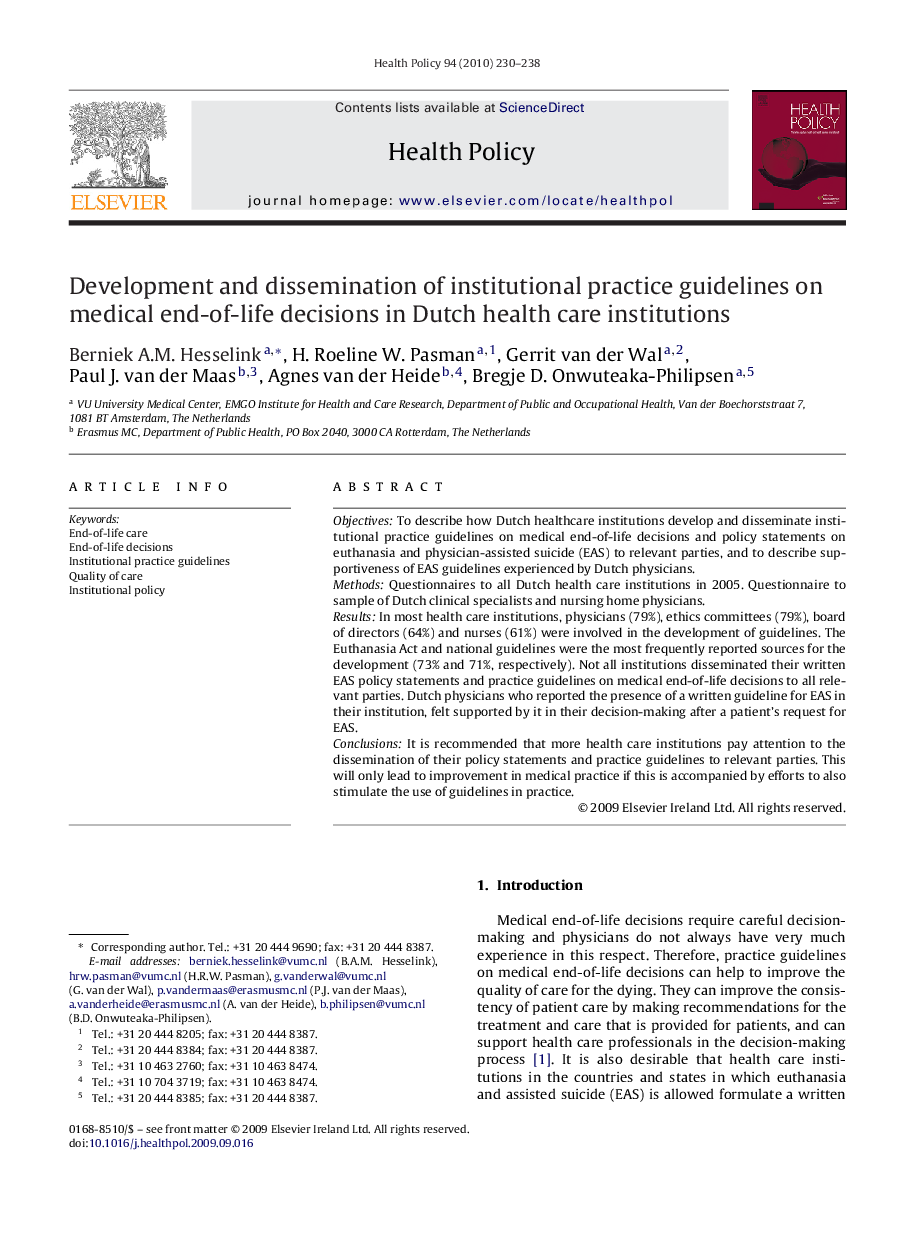| Article ID | Journal | Published Year | Pages | File Type |
|---|---|---|---|---|
| 4198374 | Health Policy | 2010 | 9 Pages |
ObjectivesTo describe how Dutch healthcare institutions develop and disseminate institutional practice guidelines on medical end-of-life decisions and policy statements on euthanasia and physician-assisted suicide (EAS) to relevant parties, and to describe supportiveness of EAS guidelines experienced by Dutch physicians.MethodsQuestionnaires to all Dutch health care institutions in 2005. Questionnaire to sample of Dutch clinical specialists and nursing home physicians.ResultsIn most health care institutions, physicians (79%), ethics committees (79%), board of directors (64%) and nurses (61%) were involved in the development of guidelines. The Euthanasia Act and national guidelines were the most frequently reported sources for the development (73% and 71%, respectively). Not all institutions disseminated their written EAS policy statements and practice guidelines on medical end-of-life decisions to all relevant parties. Dutch physicians who reported the presence of a written guideline for EAS in their institution, felt supported by it in their decision-making after a patient's request for EAS.ConclusionsIt is recommended that more health care institutions pay attention to the dissemination of their policy statements and practice guidelines to relevant parties. This will only lead to improvement in medical practice if this is accompanied by efforts to also stimulate the use of guidelines in practice.
